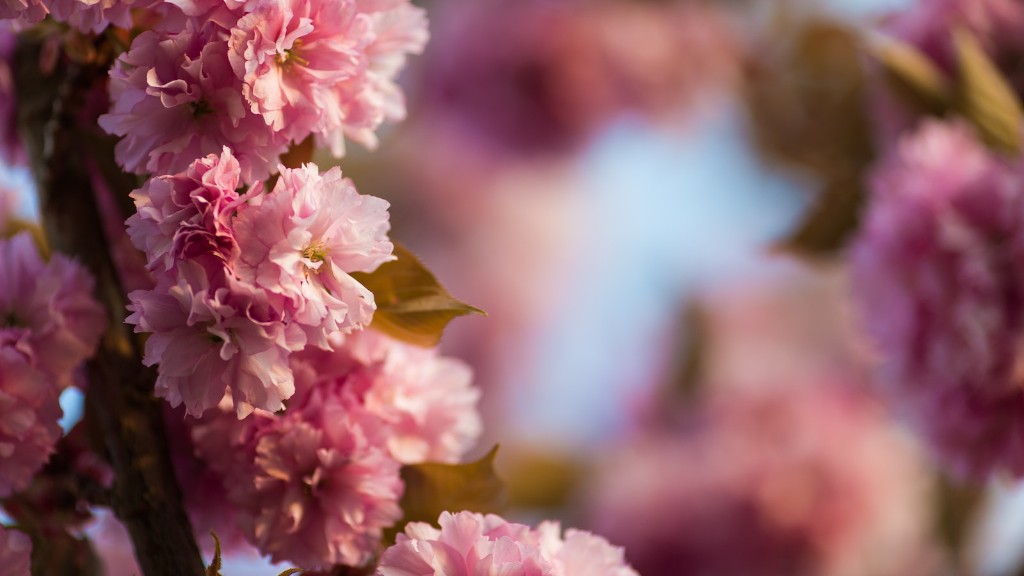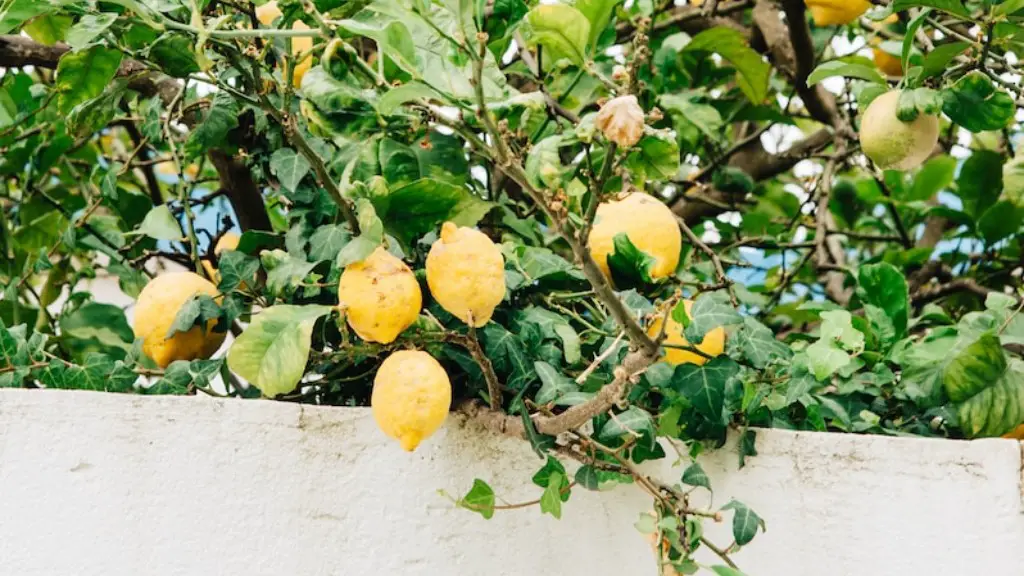It is a mystery why there are no apples on a tree that has regularly borne fruit. Apples are great tasting and people rely on them for a variety of needs. Most seasons a tree will be laden with such bounty, but not this one. What has gone wrong?
The first question to answer is whether the tree has been an apple tree for all its lifecycle. If it has not, then it may be that it is still in a transition period where it is not bearing fruit. A careful check of past years should confirm this. If it has been an apple tree for a long time period and produced fruit then it is time to look at some of the other possible causes.
Nutrient deficiency can be a common cause for lack of apple production. Trees need nutrients to produce succulent fruit. If the soil is deficient or too compacted, the tree will not be able to absorb the minerals it needs. Additionally, if there is a lack of water, the tree’s roots may become dehydrated and unable to absorb the essential nutrients.
Pest infestations can also disrupt apple production. Aphids, scab and fire blight can feed off the tree’s sap and render fruits unable to develop. Additionally, certain fungus and virus can inhabit the tree and impede growth. Treating these pests promptly can salvage the crop.
Incorrect pruning is another culprit. Pruning should follow a natural growth habit. If that has not been followed, then the apple tree may be unable to bear as many fruits as it could normally. Open centre pruning is the most effective to allow air and light access to fruits.
Pollination is another aspect to consider. An apple tree requires pollen from other apple trees in order to produce fruit. Check whether the flower has been pollinated properly and if the bees carry enough pollen from one tree to the other.
Environmental issues can also be to blame. Too much heat or too much cold during the blooming and fruit setting shapes can prevent the tree from producing. If this is the case, then irrigation and protection will be necessary. Unchecked frost can damage white and pink blooms.
Nutrient Deficiency
Nutrient deficiency can bring about a wide array of problems in a crop of apple tree, the foremost of it being the lack of apples. It is essential to ensure that the soil harbours the right pH levels, fertilizers and nutrients that the tree needs in order to thrive. Organic material like compost and leaves can improve the nutrient levels and supply of minerals to the tree.
Most common deficiencies include Nitrogen (N), Phosphorus (P), Potassium (K) and Magnesium (Mg), often termed as NPKMg. If any of these are insufficient in the soil then the symptoms of nutrient deficiency are sure to follow. These can vary from chlorosis (yellowing of leaves), lack of flowers and fruits, stunting of growth and wilting of leaflets.
Balance nutrition is necessary to get the most out of the crop. A nutrient deficiency can be fatal and it is essential to test the soil to determine which elements are missing.
Pest Infestation
An apple tree is susceptible to pest infestation, and this can lead to reduced yield of apples or in extreme cases no apples at all. Common pests to look out for include aphids, and scab and fire blight. These tiny insects feed off the tree’s sap, depriving it of nutrients and water, leading to wilting and insect damage to the apples themselves.
Aphids are small, soft-bodied insects which come in varying sizes and colours. These can spread rapidly and can infest even entire foliage of the tree and impair the formation of young fruits. Despite the fact that these are considered minor pests, they can still leave visible scars and reduce the overall amount of apples.
Scab is another common pest that can cause severe damage to the apple tree. This is caused by the fungus, Venturia Inaequalis. Infected apples have a characteristic scabby appearance with small gray spots. This can also spread to other areas of the tree, causing the leaves and shoots to become pale and discoloured. The pest can spread through water, wind and even insects.
Fire blight, also known as Erwinia amylovora is one of the most destructive apple tree diseases. This can be identified by lesions that look as though they have been burnt by fire. Infected branches and fruits will show black, burnt leaves and fruits that are discoloured, deformed and have a spinach-like texture.
It is highly recommended to use effective treatments, such as insecticidal soap, to get rid of pests and prevent them from causing further damage to the tree.
Incorrect Pruning Practices
A good pruning technique is essential to help an apple tree bear a large harvest of good quality apples. Pruning an apple tree is essential to shape it, remove diseased branches, reduce overcrowding and restore light to the center of the tree. Also, pruning helps to prevent overbearing of fruit which can lead to a depletion of valuable minerals and nutrients.
It is important to avoid incorrect pruning methods like topping and shearing, which can disrupt the natural growth of the apple tree. Topping an apple tree causes a lot of shock, and this may lead to poor health of the tree. Shearing, on the other hand, involves removing a lot of branches, which can disturb the natural structure of the tree and create a problem with too much shade.
It is best to employ the open center pruning technique for apple trees, since this helps to provide ample light and air access to the tree, and also provides some structuring for the branches that are left. Also, care must be taken to avoid pruning during the dormant season, since this can cause stress on young buds, and delay the growth of branches.
Additionally, using fruit-drying agents like wood ash and lime sulphur can help to deter fruit-sucking pests and boost pollination. These ingredients can be mixed in with water and then sprayed on the branches of the tree.
Pollination Requirements
Pollination is an important aspect to consider when it comes to apple trees, as it is essential for fruit set. Apples are self-pollinating and require other apple trees in order to produce fruit. It is necessary to check if there are any other apple trees in the vicinity and if they are providing the necessary pollen to the lone tree.
Bees have an important role in pollination, as they can transport the necessary pollen from one tree to the next. If there is a lack of insects then hand-pollination can be adopted. It is necessary to use a soft brush to collect the pollen from the flowers of one tree and then transfer it to the flowers of another tree.
It is important to ensure that both trees are in bloom at the same time, so that there is enough pollen to match the flowers. Also, the flowers should be open for pollination purposes, and if the flowers are not open then it important to wait until the next season for better results.
Environmental Stress
Environmental issues can also have an impact on the production of apples. Both too much heat and too much cold can result in reduced yields. If the temperature drops below -5°C then apple blossoms can be damaged. These flowers subsequently become barren and are unable to produce fruit.
Other environmental stressors to consider include extreme wind and strong sunlight. These can cause damage to the trees, as can hail storms. It is also important to keep a proper irrigation system in place to ensure proper hydration of the tree. Cold storage or shelter can help protect the tree from excessive temperatures.
Finally, it is essential to keep a careful watch on the weather forecast, to ensure that predicted frost can be prevented. If frost occurs, then white and pink blooms are the most vulnerable and it is important to protect them and ensure their survival. This can be done by covering the tree with floating row crop cover or using frost preventing agents.



